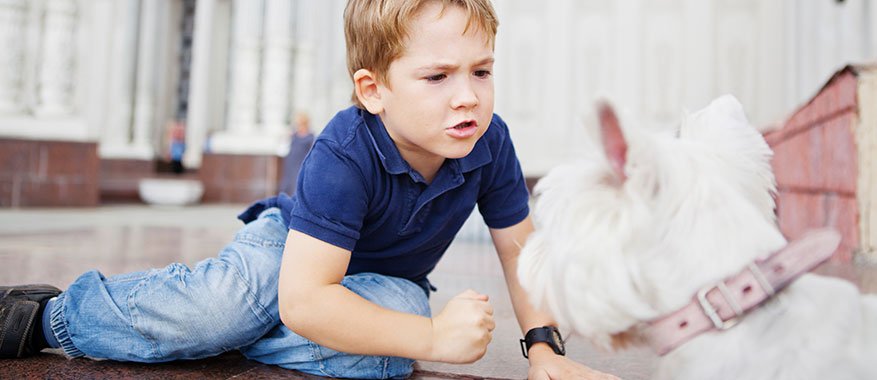The relationship between children and animals is often steeped in innocence and wonder, akin to the delicate interplay of light and shadow in a serene landscape. Nonetheless, when small children engage in harmful behaviors towards animals, it raises critical questions about the motivations underlying such actions. Is this predilection a mere manifestation of curiosity, or does it portend an alarming tendency towards aggression? This dichotomy warrants a nuanced examination, particularly from developmental and psychological perspectives.
Understanding the psychology of children is pivotal in decoding their interactions with the world, including their relationship with animals. At a young age, children are in the throes of exploration, akin to fledgling birds testing their wings. This developmental stage is characterized by an insatiable thirst for knowledge and an often blunt disregard for the well-being of others, be it human or animal. When children engage in behaviors that may seem cruel, it is essential to consider their developmental stage and cognitive abilities.
Developmental milestones, particularly in preschool-aged children, reveal a time when empathy and emotional intelligence are still budding. The ability to comprehend the feelings of others, including non-verbal beings, is not fully developed. This lack of maturity can translate into actions that adults might interpret as cruel or malicious. Children often lack the emotional vocabulary to articulate their curiosity or frustration, leading them to express themselves through physical means, however misguided those means may be.
The metaphor of a blossoming flower might serve well in illustrating this concept. Just as a flower may inadvertently cause harm to its surroundings as it expands and seeks sunlight, so too may a young child inadvertently harm an animal out of sheer ignorance. Therefore, one must differentiate between genuine malice and innocent exploration when assessing a child’s behavior. This scrutiny is crucial, as conflating the two could lead to detrimental consequences for both the child and the animal involved.
Moreover, it is worth examining the influence of external factors that may exacerbate harmful behaviors. Environmental conditioning plays a significant role in shaping a child’s understanding of animals. The media, the dynamics of a household, and the social customs of a community collectively shape a child’s perception. Exposure to violent imagery or narratives can desensitize young minds, leading them to regard animals not as sentient beings but as mere objects for amusement or experimentation.
As children navigate their formative years, they acquire notions of power dynamics. A child may wield control and invulnerability in their relationship with an animal, perceiving their actions as harmless play. Such interactions can manifest in frightening ways—children may pull tails, pinch, or otherwise harm animals, oblivious to the pain they inflict. The challenge lies in educating these young minds about empathy, respect, and the idea that animals possess their own desires and emotions, paralleling those of humans.
It is imperative to create opportunities for children to cultivate empathy. Incorporating interaction with animals in a nurturing setting, where positive behaviors and gentle practices are modeled, can be transformative. Teaching children about responsible pet ownership and animal care, through activities like volunteering at animal shelters or even simple lessons in kindness, can forge the necessary emotional connections that encourage them to treat animals with decency.
However, if such behaviors persist or escalate, it may be indicative of deeper psychological issues. In rare instances, a pattern of demonstrating aggression towards animals during formative years can be an early warning sign of behavioral disorders or emotional difficulties. This correlation has been frequently cited in psychological studies, suggesting a potential link between childhood animal abuse and later interpersonal aggression. Thus, while one should always approach the situation with a lens of understanding, it is equally crucial to remain vigilant in recognizing signs that may require intervention.
Furthermore, the implications of dismissing harmful behaviors as mere childish antics carry severe consequences. It perpetuates a societal cycle that trivializes animal cruelty, echoing the problematic attitudes that normalize aggression toward those who are more vulnerable. Addressing the issue head-on, through open dialogues, educational initiatives, and community involvement, can create a more compassionate society, one that acknowledges the intrinsic value of all sentient beings.
It is equally vital to facilitate discussions about emotions and consequences. Encouraging children to articulate their feelings—sorrow, frustration, excitement—can help them understand the impact of their actions. Developing emotional intelligence should be an integral aspect of a child’s upbringing, fostering an awareness that extends beyond their immediate desires. This introspective journey aids in bridging the chasm between curiosity and cruelty.
In conclusion, the interaction between small children and animals is a complex tapestry woven from threads of curiosity, ignorance, and the budding of empathy. While initial instances of harmful behavior may emerge from a place of innocence, remaining conscious of the potential for deeper issues remains paramount. By fostering environments where empathy, respect, and understanding for all living beings are prevalent, society can cultivate a generation that appreciates the beauty of coexistence rather than domination. To nurture a harmonious bond between children and animals is to create a lasting legacy of compassion, one that allows both to flourish together in a shared existence.








